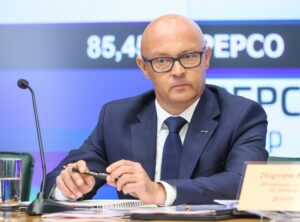The number of connections between the space industry and others is greater than many people realize. The space sector contributed to modern medicine, is also associated with research on climate, eg. the observation of CO2 emissions, the invention of seat belts, which were initially designed for astronauts is also its merit – says Dr. Ilona Tobjasz, Development Director of SENER Poland in an interview with the portal BiznesAlert.pl.
BiznesAlert.pl: What is your company and what does it do?
Ilona Tobjasz: SENER is an international engineering and technology group that operates, among others, in the energy, infrastructure and transport, maritime, defense or aerospace industries. The Polish branch employs 45 people and specializes in aerospace engineering. The vast majority of our team is engaged in engineering – design, aided manufacturing, and quality control of all processes from design through production to final tests and later delivery of the product to the customer. We work intensively with other Polish companies – subassembly manufacturers, research institutes and design companies in almost all projects. This requires us to the current knowledge of all stages of production, so that we can participate in this and take care of the technical documentation that is delivered to our customer’s along with the end product.
We create mechanisms that open, close and direct various parts of satellites, such as antennas or sun visors. Another area developed in Poland are MGSE – all devices that support the construction and installation of the satellites during the entire process of their creation – raise, twist, hold on platforms. This is a demanding field, because satellites are usually very heavy, their mass often exceeds one ton. The collapse of such equipment means, in turn, ruining a project worth at least hundreds of millions of euros. Safety is very important for these devices, which is why they are subject to rigorous testing – we check their strength and load capacity.
What is the structure of your company in Poland?
The hierarchy of our company is almost flat – we have a director for technical and development issues, which makes it easier for us to reach the client and work within the organization. Each of us has direct contact with people who work here and have their projects, we exchange information on an ongoing basis. Thanks to this structure, we also have a direct impact on the development of the company’s development and the new strategy, which is now the key for us. We plan to develop our activities in the coming months.
What are your flagship projects?
This year it is ExoMars, in which we developed the so-called umbilical cord, i.e. an electric connection between the rover and the Mars lander with the mechanism of umbilical cord release. A large and important project was also Euclid, which delivered 13 MGSE devices, which by the way has enabled us to develop expertise in this area. At the moment it can be said that it is closed, we have already delivered equipment to the Italian company Thales and we are waiting for their use next to the satellite. We keep our fingers crossed for this project, because it will be a solid reference for us for other projects of the European Space Agency.
Who is your biggest customer?
The European Space Agency is the largest customer for us and for all companies in the space industry in Poland, as well as most of Europe. The ESA member states pay a contribution which later returns to the countries on the basis of the so-called geographical return (ESA membership fees are returned to payers in the form of orders for companies from their country – ed.). The crucial moment for the Polish space sector was 2012, when we joined the ESA. At that time, the space sector became a client for companies that had previously run a similar one. The Polish space sector is young and we do not have many commercial clients, so the main clients can be the army, administration and ESA. Nevertheless, clients such as the Polish army or the administration have not yet specified their needs.
How can the space sector help meet the goals of policies set by the government?
In 2017, the Polish Space Strategy was established, which established three main goals that the space sector should achieve by 2030. These are economic goals, but also those concerning safety and other branches of the economy. From the very political assumption at the level of Ministry of Entrepreneurship and Technology, but also the prime minister, the sector must develop in the directions specified in the strategy.
How does the space sector contribute to the development of other industries?
The number of connections is much greater than many people realize. The space sector has influenced modern medicine, it is also associated with climate research, eg observation of CO2 emissions. One of the companies created an application that indicated green areas in the city. On the basis of satellite data in the mountains, pedestrian routes are marked and avalanche warnings are issued. These data are also used by emergency services in case of a flood.
Interview conducted by Michał Perzyński








